
“In the minutes before sunrise on the edge of the Corcovado, a troop of howler monkeys announces the twilight transition from night to day, reminding us that communication is the key to successful communities and, despite distance, we are never truly alone.” —Chris Castles, Macaw Conservation
Living the Dream?
Chris Castles is lucky — he found reception. Not an easy task surrounded by deep tropical forest, rice fields and the Pacific Ocean. “Mum says a lot of people don’t get to do what I do, to follow their passion,” he says via WhatsApp, “and I’m very blessed to be able to do that. But from a personal perspective, there are a lot of sacrifices as well. It is doing what you love. Sometimes it does feel like you are on holiday and you are living the dream. But if you’ve been on holiday for 17 years, you want to hang out with your family.” Chris is currently separated from his family in New Zealand by several climate and time zones, thousands of kilometers, the Pacific Ocean and now restricted travel due to the pandemic.
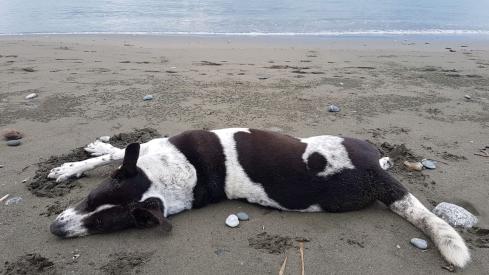
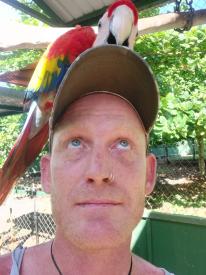
Chris Castles' faithful companion, left. Conservationist Chris Castles, right. Photos by Chris Castles.
Macaw Conservation, the NGO founded by New Zealand-born Chris, rescues illegally kept macaws, hand raises their offspring and then reintroduces them into their natural ecosystems in the wild of Costa Rica’s Osa Peninsula. They use captive breeding and soft release techniques — a “gradual transition to the wild [that] can include supplementary feeding, providing shelter and pre-release conditioning.”
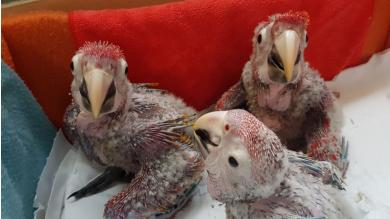
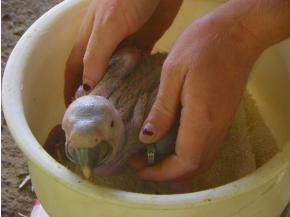
Baby macaws growing fast, left. Photo by Chris Castles. Weighing baby macaws, right. Photo by Merlin Pratsch.
Located in southwestern Costa Rica, the Osa is one of the most biodiverse places on our planet. It is estimated to be home to 2.5% of the world’s biodiversity in only 700 square miles. Sounds like a great place to live, right? But paradise does not come for free. Especially not for those who put all their energy into saving this richness of life. It can be a lonely mission. “One thing I learned here on the Osa is that isolation is slow torture,” Chris says. “You can be in your little paradise — it’s like living on an island — but you are on your own.”
In the early 2000s, Chris intended to stay in Costa Rica for a year, having his Overseas Experience, a New Zealand tradition of working for an extended period abroad. “Did I picture myself here, 17 years ago? Isolated amid a global pandemic in a rural bubble on the border of Corcovado National Park with more than 30 macaws, three dogs and some chickens?”
The small main town of Puerto Jiménez lies a half-hour ride away along a dusty dirt road. Jungly Osa is sparsely populated. Costa Rica’s largest national park, the Corcovado, occupies around a third of the peninsula and is a place of superlatives. It is home to the country’s largest population of scarlet macaws, and the variety of vegetation offers habitats for a mind-blowing diversity of wildlife including harpy eagles, American crocodiles, jaguarundis, spider monkeys and otters.
Chris lives on the park’s outer boundaries where the landscape is shaped by livestock and rice fields. Here, in the transition area from human-shaped landscapes to pristine forests, electricity comes from a generator, there is hardly any phone reception and rainwater is stored in a tank. Chris is working to reforest this small piece of land. Behind his property runs a small river, a natural wildlife corridor cutting through and connecting these landscapes. Howler monkeys announce the morning, and scarlet macaws begin to squawk. At dawn, hundreds of Amazon parrots streak across the sky. A jaguar calls at night. Time flows differently here.
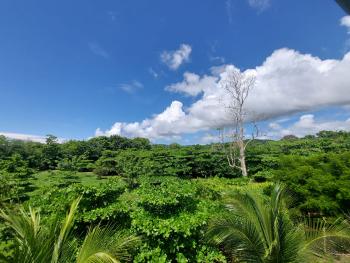
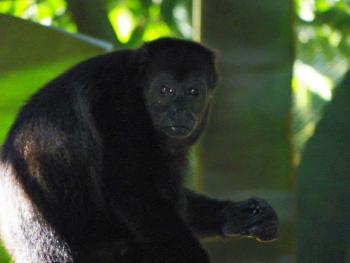
Formerly a bare rice field, reforested by Chris Castles, left. Photo by Chris Castles. Howler monkey, right. Photo by Merlin Pratsch.
An Often Lonesome Mission
When the conservation of a species becomes a lifelong mission, weighty sacrifices have to be made. The online initiative Lonely Conservationists is a pioneer in publicizing this issue through a virtual community of conservationists telling their stories and by offering workshops and discussions. Personal well-being is crucial to sustaining the high levels of energy needed for such missions.
In Australian Geographic, Lonely Conservationists founder Jessie Panazzolo explains that “conservationists often face feelings of isolation, job insecurity, ecological anxiety and PTSD [posttraumatic stress disorder], but few spoke up about it.” Moreover, she describes the dilemma of conservation professionals, “I don’t know this for certain, but I am pretty sure that when people in most other walks of life choose their professions, they do not feel the impending doom of choosing their job over proper social interactions and opportunities for relationship building.”
Chris is a family person as much as a bird person. When he talks about his country of birth, he turns into the best tourism ambassador you could imagine. And always there is his pure love for macaws. For them, Chris sacrifices much of his social life. He’s an interspecies father to a flourishing community of macaws, a featherless part of this flock. The bird enthusiast has built up something that will hopefully last for decades: healthy populations of macaws coloring the sky with their unique paintbox-plumage. With his bare hands, he has turned his land into a literal breeding ground for the reintroduction of macaws on Costa Rica’s Pacific coast. “Five years ago, this property was a bare rice field — not a single tree. And now over 500 trees cover the land.”
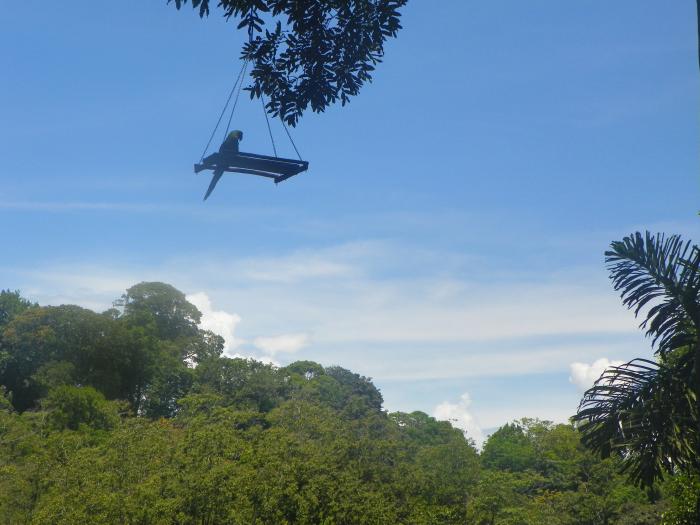
Living away from gaudy billboards, noisy traffic and people’s constant rush for everything is a romantic idea. To establish and explore a deeper connection with nature’s creatures and wonders goes even further. When following this path, it seems that solitude is an inherent part of the equation. Almost 100 years apart, naturalist writer Henry Beston and Chris have something in common. Both ended up staying much longer in their refuge than they originally intended. And both developed a deep connection to the mysteries of nature.
“Nature is part of our humanity, and without some awareness of that divine mystery, man ceases to be man,” Henry Beston wrote in The Outermost House. For him, two weeks turned into a year spent in his wooden house on Cape Cod, filling notebooks with observations of the migration of seabirds, the tides and the formations of dunes. For Chris, one year turned into 17 years of reintroducing great green and scarlet macaws to the wild. Years of heady highs and shattering hardships flew by in a life that is shaped, more than ever, by uncertainty, isolation and his indispensable and constant booster: passion.
Isolated Conservationist, Isolated Knowledge?
Conservation is a human endeavor, so the human context cannot be ignored. The issue of solitude is one of many factors potentially influencing conservation outcomes. It touches on our relationship to nature, the questions of how much each of us wants to contribute to save its diversity, the realities of life for conservation professionals and the psychological impacts of encounters with wilderness. It is not just a matter of individual sacrifices, but a question of sustainability.
Chris has a special sense of the birds' presence. The vehicle clatters, shaken by the many potholes on the dirt road out of town. Nicola Cruz’ electronic beats, driven by folkloric, Andean sounds, boom. Suddenly, he brakes, shuts off the radio and points toward a tree at the roadside. Two scarlet macaws happily squeak, barely visible, in a dense tree crown.
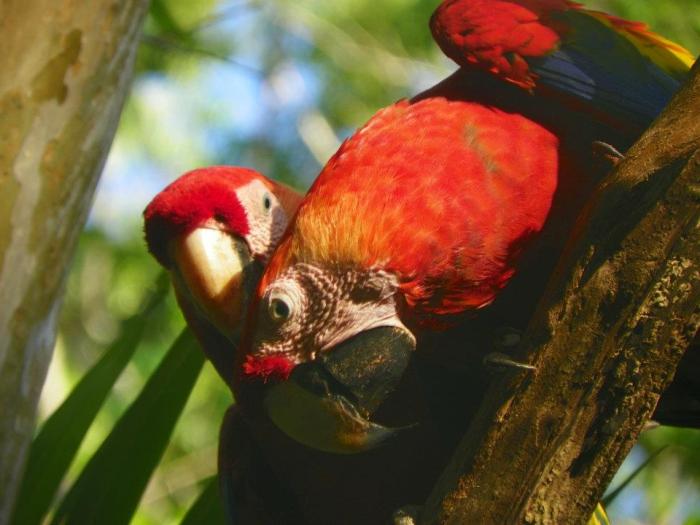
Over the years, he has gained a significant amount of knowledge about macaws, reintroduction and their natural habitat. How will he pass on this knowledge, this complex mixture of experiences, values, intuition, contacts and information? What happens to the knowledge of those who spend years working in an isolated environment on the frontlines of conservation? There is little data regarding this issue.
Often we are focused on what we don’t know. But we shouldn’t forget what we — or some of us — already know. Chris’ knowledge is a form of local ecological knowledge, described by Global Wildlife Conservation as “knowledge acquired through experience and observation about the surrounding environment,” developed through long-term interactions with the natural environment. This is combined with expert knowledge concerning breeding, hand raising and reintroducing scarlet and great green macaws that few share.
Much of what Chris knows, he learned through trial, error and observation — what would be a treasure chest of information for research, decision-making and conservation if documented thoroughly. When Chris started releasing macaws, most of the scientific evidence at the time contradicted everything he had learned in the field. The hardest part about setting up a release site was establishing the first flock — a core population of macaws that the birds who are released later can learn from, such as where to find feed stations and the best trees to roost in. “That was stuff we had to learn ourselves. And looking at the survival rates, it paid off.”
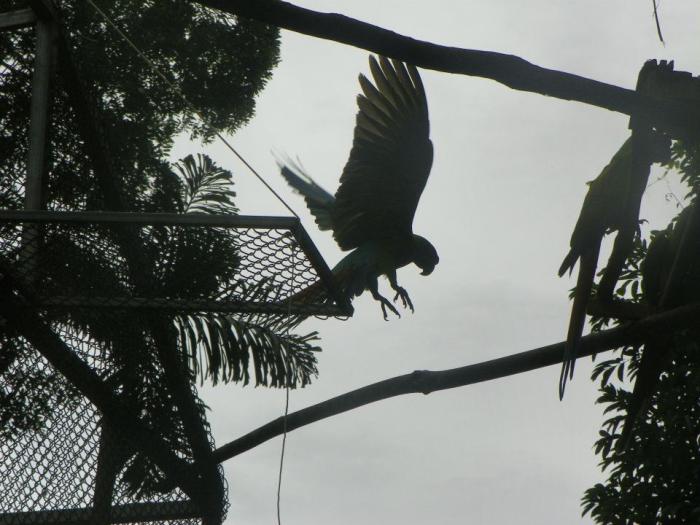
Time living in the area is a critical factor in acquiring and preserving such knowledge, as are social relationships. Knowledge exchange and cooperation between science and practice is another important aspect.
“Knowledge has been passed on to me by people who’ve worked with the birds for decades. I was very lucky to have had such good mentors,” Chris remembers. His passion for aviculture started at the age of seven. Luckily, there was enough space on the family farm on the North Island of New Zealand to house various pheasant species, bantams and more than sixty parrots, including Australian grass parakeets. Fortunately, his dad empathized with his son’s passion since he himself had raised and reintroduced different bird species into the wild.
At 17, Chris started working in the Wellington Zoo, diving into captive wildlife management with a focus on breeding for reintroduction. For the next six years, he worked with two blue-and-gold macaws whose names he remembers to this day: João and Azure. Then, for his Overseas Experience, he chose to work for an elderly couple who owned a sanctuary in Central Costa Rica — a magical place for a bird lover. His deep gratitude to this couple and the impact they had on him is hard to describe, but you can hear it in his nostalgic voice. What followed would make an incredible movie. The feeling of having an orchestra playing in your body when a released great green spreads his wings and flies freely for the first time in his life. Raids on the street. Days formed by the rhythm of the birds, and spent cutting through the forest to collect nuts and fruits for them.
Chris has been living and working with macaws for almost two decades. The best way to pass on knowledge, he says, is to work side by side and gain practical experience: “You can’t get this experience from a textbook.” However, extremely limited time, human and financial resources, the solitude and difficulties in finding a partner with the same commitment hamper the passing on of knowledge. Sure, volunteers, scientists and filmmakers do come around, but for short periods. There are people interested in working in this field, but “the problem is sustaining them financially. You need the right facilities. Here, I don’t have good internet. I still don’t have electricity. So many wouldn’t be able to cope with that long term. A few months, fine, but anything long term, not fine,” Chris says. “I don’t want to be the only person sustaining this project — it needs multiple people.” Besides, when large and venomous Brazilian wandering spiders are regular (uninvited) visitors, you might not want to be on your own.
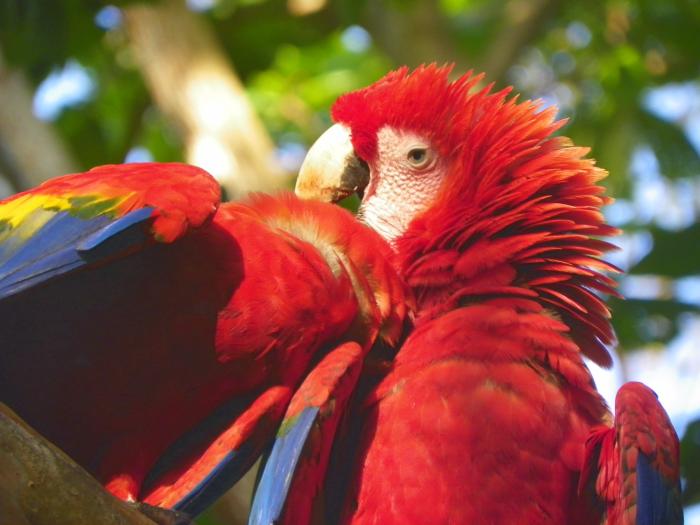
At the moment, he is training two local people who live nearby. They won’t be leaving after a few weeks, like the visiting scientists and volunteers, and they hold a rich knowledge of the region. “I want to train several local people from the community. I think it’s better to train multiple people. Because if you train one individual and something happens to that individual, all knowledge gets lost. So the more people you train, the more your knowledge gets passed on and people develop different techniques.”
Whether someone has the same level of interest is another story. "Isolation also makes it harder to visit other projects, go to seminars and network with potential funders.” At the end of the day, the most important question remains: Who is looking after the birds? In his prior projects, Chris had a team around him. But the last five years have been different, as he was starting his current project from scratch, trusting in his experience that “some of the most incredible friendships and relationships you are going to have are with people you didn’t expect to meet and that blossom into something amazing.”
The Race for Information
Information and knowledge-sharing gets entangled in political, economic and social dynamics. Money rules the world, even well into the Central American forests. And there’s a lot riding on reputation. A big foundation or organization can give a solitary conservationist an extremely hard time. The project on the Osa is not Chris’ first. Some years ago, he ran an organization that was among the first to successfully reintroduce great green macaws on the Caribbean coast. Then, things started to change quickly: inheritance disputes, greed for money, ignorance, abuse of confidence.
In the end, Chris lost everything he had built up over years of work. It might have been passionate, it might have been a bit crazy, but he then jump-started a completely new organization, Macaw Conservation. He had to gain independence and grow strong again. To save biodiversity, you have to look after yourself as much as you do other species.
Chris’ experience is that many conservation organizations are “run more as businesses.” Do conservationists really have to think like entrepreneurs? If you don’t feel comfortable with our social and economic systems and all-pervasive capitalist logic, it can make you feel lonely. This does not imply that business approaches are bad to the core, nor that they are a cure-all. It’s a difficult balancing act. Sometimes resources come with strings. “It’s a strange industry and it’s not like everybody’s on the same path. It’s a real game of who has what data, who knows more, who’s doing this, who is doing that. I found this really strange. There’s a lot going on behind the scenes.” Chris' deep connection to his environment is still there, despite all these challenges. Feeling more connected to the outer world and keeping up energy “just comes with more infrastructure, I guess.” And, he adds laughing, “mosquito repellent.”
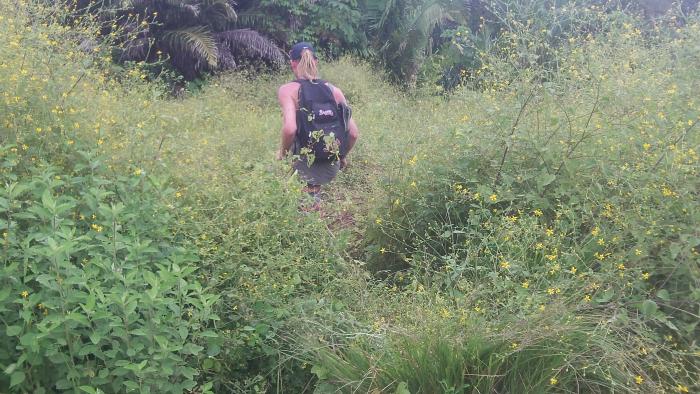
An Interspecies Community
The sun is setting now. A choir of cicadas sends their songs through the sweet, thick and humid air. The sky assumes a warm, reddish color. Chris and his three dogs relax on his small terrace. From time to time, macaws squawk. Amid the Sixth Mass Extinction, we are facing “the age of loneliness” or, in the words of biologist Edward O. Wilson, “a time for and all about our one species alone.” To prevent this imminent loneliness of losing myriads of species, do we really need another type of loneliness? The kind that passionate individuals put up with to safeguard life on earth? And not only physical isolation, but also the feeling of being one of the few who care about other species.
One thing is certain: in order to persevere, “you’ve got to love something.” For Chris, it’s the macaws. “The macaws fascinate me. Every time I feel unmotivated, I just go to hang out with the macaws, ask ‘What are you up to today?’ and learn something new.” Chris might live secluded from his own species for much of his time, but he’s deeply connected with others. In the end, he is right when he says “we’re never truly alone."